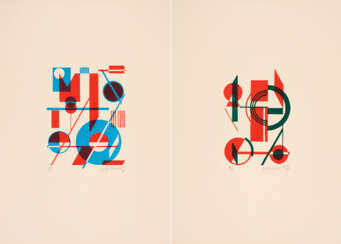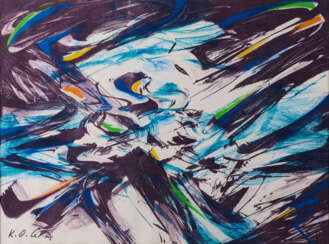
A1173: On Paper

Klaus Fußmann is a contemporary German painter. He studied from 1957 to 1961 at the Folkwang University of the Arts in Essen and from 1962 to 1966 at the Berlin University of the Arts. From 1974 to 2005, he was a professor at the Berlin University of the Arts. His work has won several awards, such as the Villa Romana prize in 1972 and the Art Award of Darmstadt in 1979. Major presentations of his work include exhibitions at the Neue Nationalgalerie in Berlin, 1972; the Mathildenhöhe in Darmstadt, 1982; the Kunsthalle Emden, 1988; the Kunsthalle Bremen, 1992; and the Museum Ostwall in Dortmund, 2003. In 2005 Fußmann completed a monumental ceiling painting in the Mirror Hall of the Museum für Kunst und Gewerbe Hamburg.

Klaus Fußmann is a contemporary German painter. He studied from 1957 to 1961 at the Folkwang University of the Arts in Essen and from 1962 to 1966 at the Berlin University of the Arts. From 1974 to 2005, he was a professor at the Berlin University of the Arts. His work has won several awards, such as the Villa Romana prize in 1972 and the Art Award of Darmstadt in 1979. Major presentations of his work include exhibitions at the Neue Nationalgalerie in Berlin, 1972; the Mathildenhöhe in Darmstadt, 1982; the Kunsthalle Emden, 1988; the Kunsthalle Bremen, 1992; and the Museum Ostwall in Dortmund, 2003. In 2005 Fußmann completed a monumental ceiling painting in the Mirror Hall of the Museum für Kunst und Gewerbe Hamburg.

Michael Buthe was a German artist who lived and worked between Germany and Morocco. He exhibited widely throughout Europe during his life and is known for his eclectic and prolific oeuvre which encompasses painting, sculpture, and installation.

Klaus Fußmann is a contemporary German painter. He studied from 1957 to 1961 at the Folkwang University of the Arts in Essen and from 1962 to 1966 at the Berlin University of the Arts. From 1974 to 2005, he was a professor at the Berlin University of the Arts. His work has won several awards, such as the Villa Romana prize in 1972 and the Art Award of Darmstadt in 1979. Major presentations of his work include exhibitions at the Neue Nationalgalerie in Berlin, 1972; the Mathildenhöhe in Darmstadt, 1982; the Kunsthalle Emden, 1988; the Kunsthalle Bremen, 1992; and the Museum Ostwall in Dortmund, 2003. In 2005 Fußmann completed a monumental ceiling painting in the Mirror Hall of the Museum für Kunst und Gewerbe Hamburg.
Robert Motherwell was an American artist and painter, renowned for his significant contributions to the Abstract Expressionism movement. Born in Aberdeen, Washington, in 1915, Motherwell's work is celebrated for its expressive use of form and color, which he utilized to convey deep emotional and philosophical themes. His approach to art was both intellectual and deeply personal, making him a pivotal figure in 20th-century art.
Motherwell's dedication to exploring the relationship between philosophy, literature, and visual art set him apart from his contemporaries. He was not just an artist but also an articulate spokesman for the Abstract Expressionist movement, emphasizing the importance of spontaneity and the expression of the subconscious. His series "Elegies to the Spanish Republic" is among his most famous works, exemplifying his skill in using black and white to evoke powerful emotions and reflections on human tragedy and resilience.
His art is held in high esteem worldwide, with pieces displayed in major museums and galleries, including the Museum of Modern Art (MoMA) in New York and the Tate Modern in London. Motherwell's ability to blend abstract elements with profound thematic content has made his work enduringly relevant to both collectors and scholars in the fields of art and antiques.
For those keen on delving deeper into the world of modern art and Abstract Expressionism, Robert Motherwell's oeuvre offers a rich vein of exploration. His works not only encapsulate the dynamism and innovation of mid-20th-century American art but also provide insight into the intellectual and emotional depths from which they sprang. To stay informed about new sales and auction events related to Robert Motherwell, sign up for our updates. This subscription is a gateway to the vibrant and evolving market of art collecting, ensuring you never miss an opportunity to engage with the legacy of this monumental artist.

Wobbe Alkema is a Dutch artist, graphic artist, architect, designer and sculptor. He is known for his abstract and geometric works, often combining elements of constructivism and De Stijl.
Alkema was trained as an architect and then turned to art, studying at the Academy of Fine Arts in Groningen. In the 1920s he was involved with the artist collective De Ploeg, which was active in the northern Netherlands and promoted modernist art and culture.
Throughout his career, Alkema continued to explore the principles of abstraction and geometry in his work. His paintings often feature simple geometric shapes such as squares, circles and triangles arranged in complex compositions that suggest movement and depth. He was also interested in the interaction of colour, using bright, bold hues to create dynamic contrasts and harmony.
In addition to painting, Alkema created a number of sculptural works, including abstract reliefs and freestanding sculptures. He also designed furniture and other functional objects, applying his principles of abstraction and geometric form to everyday objects.
Alkema's work is held in the collections of several museums in the Netherlands, including the Groninger Museum and the Amsterdam Stedelijk Museum. He is considered an important figure in the development of abstract art in the Netherlands, and his work continues to be admired for its innovative use of form and colour.
Robert Motherwell was an American artist and painter, renowned for his significant contributions to the Abstract Expressionism movement. Born in Aberdeen, Washington, in 1915, Motherwell's work is celebrated for its expressive use of form and color, which he utilized to convey deep emotional and philosophical themes. His approach to art was both intellectual and deeply personal, making him a pivotal figure in 20th-century art.
Motherwell's dedication to exploring the relationship between philosophy, literature, and visual art set him apart from his contemporaries. He was not just an artist but also an articulate spokesman for the Abstract Expressionist movement, emphasizing the importance of spontaneity and the expression of the subconscious. His series "Elegies to the Spanish Republic" is among his most famous works, exemplifying his skill in using black and white to evoke powerful emotions and reflections on human tragedy and resilience.
His art is held in high esteem worldwide, with pieces displayed in major museums and galleries, including the Museum of Modern Art (MoMA) in New York and the Tate Modern in London. Motherwell's ability to blend abstract elements with profound thematic content has made his work enduringly relevant to both collectors and scholars in the fields of art and antiques.
For those keen on delving deeper into the world of modern art and Abstract Expressionism, Robert Motherwell's oeuvre offers a rich vein of exploration. His works not only encapsulate the dynamism and innovation of mid-20th-century American art but also provide insight into the intellectual and emotional depths from which they sprang. To stay informed about new sales and auction events related to Robert Motherwell, sign up for our updates. This subscription is a gateway to the vibrant and evolving market of art collecting, ensuring you never miss an opportunity to engage with the legacy of this monumental artist.

Jürgen Partenheimer is a German artist. Since coming to prominence through his participation in the Paris Biennial in 1980 and the Venice Biennial in 1986, his work has been shown internationally. His practice includes painting, drawing and sculpture, and draws on theory, poetry and prose. His art has been referred to as metaphysical realism.

Emil Schumacher was a German painter. He was an important representative of abstract expressionism in post-war Germany.
In 2009 the Kunstquartier Hagen was inaugurated combining the Karl Ernst Osthaus-Museum Hagen as well as the newly built Emil Schumacher Museum in one Museum complex.
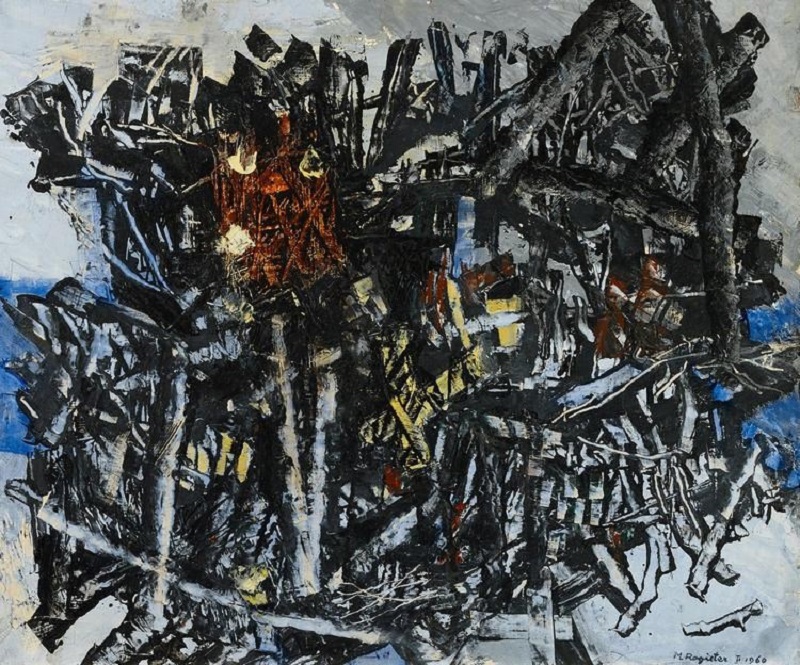
Marie-Louise von Rogister was a German artist and important painter of the Informel.
From 1920 to 1924 Marie-Louise von Rogister studied painting at the Kunstgewerbeschule Kassel. A trip to Paris in 1925 was followed by a study visit to the Academie de la Grande Chaumiere in 1929/1930.
Marie-Louise von Rogister's work developed from the representational to the abstract. Her oeuvre includes paintings in oil and acrylic as well as in wax crayon and pencil. Marie-Louise von Rogister's breakthrough came in the late 1950s with her "Braided Pictures". Areas of colour are overlaid with thread-like, black structures. The so-called "Horizon Paintings" in the 1980s marked a new artistic breakthrough: clear lines and strong colours dominated the paintings. It was also through them that Informal Art came to Germany.
Cy Twombly, birth name Edwin Parker Twombly, was an American artist renowned for his contributions to painting, sculpture, and photography. Embracing a unique blend of classical references and graffiti-like elements, Twombly's work stands out in the art world for its distinctive, emotive scribbles and use of historical and literary themes. His art, often categorized within the realms of Abstract Expressionism and minimalism, diverges significantly in its lyrical sensitivity and intellectual depth, making it a subject of fascination and study among art collectors and experts.
Twombly's career, which spanned over six decades, was marked by a relentless pursuit of innovation and an intimate engagement with the materials of his art. His paintings, characterized by their gestural brushstrokes and cryptic symbols, evoke a range of emotions and ideas, bridging the gap between the personal and the universal. Notable works such as "Fifty Days at Iliam" displayed at the Philadelphia Museum of Art, and his series inspired by the seasons, showcase his ability to transform classical narratives into contemporary masterpieces. These pieces not only reflect Twombly's profound understanding of history and literature but also his capacity to reinterpret them within a modern context.
Furthermore, Twombly's sculptures, often overlooked next to his paintings, provide a tangible connection to the ancient world through their use of classical forms and unconventional materials. His work in this medium further emphasizes his fascination with the past, while simultaneously asserting the relevance of historical themes in contemporary art.
For collectors and experts in art and antiques, Cy Twombly's oeuvre represents an intriguing blend of poetic grace and intellectual rigor. His works, found in major museums and galleries worldwide, continue to inspire and challenge audiences with their enigmatic beauty and depth.
To stay informed about new product sales and auction events related to Cy Twombly's work, we invite you to sign up for updates. This subscription is an excellent opportunity for enthusiasts and collectors to remain connected to the evolving market of Twombly's art.

Karl Otto Götz was a German artist, filmmaker, draughtsman, printmaker, writer and professor of art at the Kunstakademie Düsseldorf. He was one of the oldest living and active artists older than 100 years of age and is best remembered for his explosive and complex abstract forms. His powerful, surrealist-inspired works earned him international recognition in exhibitions like documenta II in 1959. Götz never confined himself to one specific style or artistic field. He also explored generated abstract forms through television art. Götz is one of the most important members of the German Art Informel movement.

Gerhard Richter is a German visual artist. Richter has produced abstract as well as photorealistic paintings, and also photographs and glass pieces. He is widely regarded as one of the most important contemporary German artists and several of his works have set record prices at auction.

Gerhard Richter is a German visual artist. Richter has produced abstract as well as photorealistic paintings, and also photographs and glass pieces. He is widely regarded as one of the most important contemporary German artists and several of his works have set record prices at auction.

Armand Pierre Fernandez, widely known by his mononym Arman, was a French-born American artist celebrated for his innovative contributions to the Nouveau Réalisme movement and his radical use of everyday objects in art. Born in Nice, France, on November 17, 1928, Arman's early exposure to art came from his father, an antiques dealer and amateur artist, which deeply influenced his later artistic endeavors.
Arman moved beyond traditional painting techniques early in his career, instead creating his signature "Accumulations" and "Poubelles" (trash) sculptures. These works involved assembling and compacting everyday items like watches, clocks, and even automobiles, embedding these objects in layers of concrete or encasing them in Plexiglas. One of his most notable large-scale works is "Long Term Parking," a 60-foot high sculpture made of concrete-encased cars, situated in Jouy-en-Josas, France.
His work is an essential bridge between European and American trends in Pop art and has been widely exhibited in major institutions like the Metropolitan Museum of Art in New York, the Tate Gallery in London, and the Centre Pompidou in Paris. Arman's innovative techniques and philosophical approach to materials challenged conventional categorizations of art and inspired future generations of artists.
For collectors and enthusiasts interested in staying updated on exhibitions and sales related to Arman's work, signing up for updates can provide essential insights and opportunities related to this influential artist. Join our community to ensure you don't miss out on new discoveries and auction events associated with Arman's legacy.

Wobbe Alkema is a Dutch artist, graphic artist, architect, designer and sculptor. He is known for his abstract and geometric works, often combining elements of constructivism and De Stijl.
Alkema was trained as an architect and then turned to art, studying at the Academy of Fine Arts in Groningen. In the 1920s he was involved with the artist collective De Ploeg, which was active in the northern Netherlands and promoted modernist art and culture.
Throughout his career, Alkema continued to explore the principles of abstraction and geometry in his work. His paintings often feature simple geometric shapes such as squares, circles and triangles arranged in complex compositions that suggest movement and depth. He was also interested in the interaction of colour, using bright, bold hues to create dynamic contrasts and harmony.
In addition to painting, Alkema created a number of sculptural works, including abstract reliefs and freestanding sculptures. He also designed furniture and other functional objects, applying his principles of abstraction and geometric form to everyday objects.
Alkema's work is held in the collections of several museums in the Netherlands, including the Groninger Museum and the Amsterdam Stedelijk Museum. He is considered an important figure in the development of abstract art in the Netherlands, and his work continues to be admired for its innovative use of form and colour.
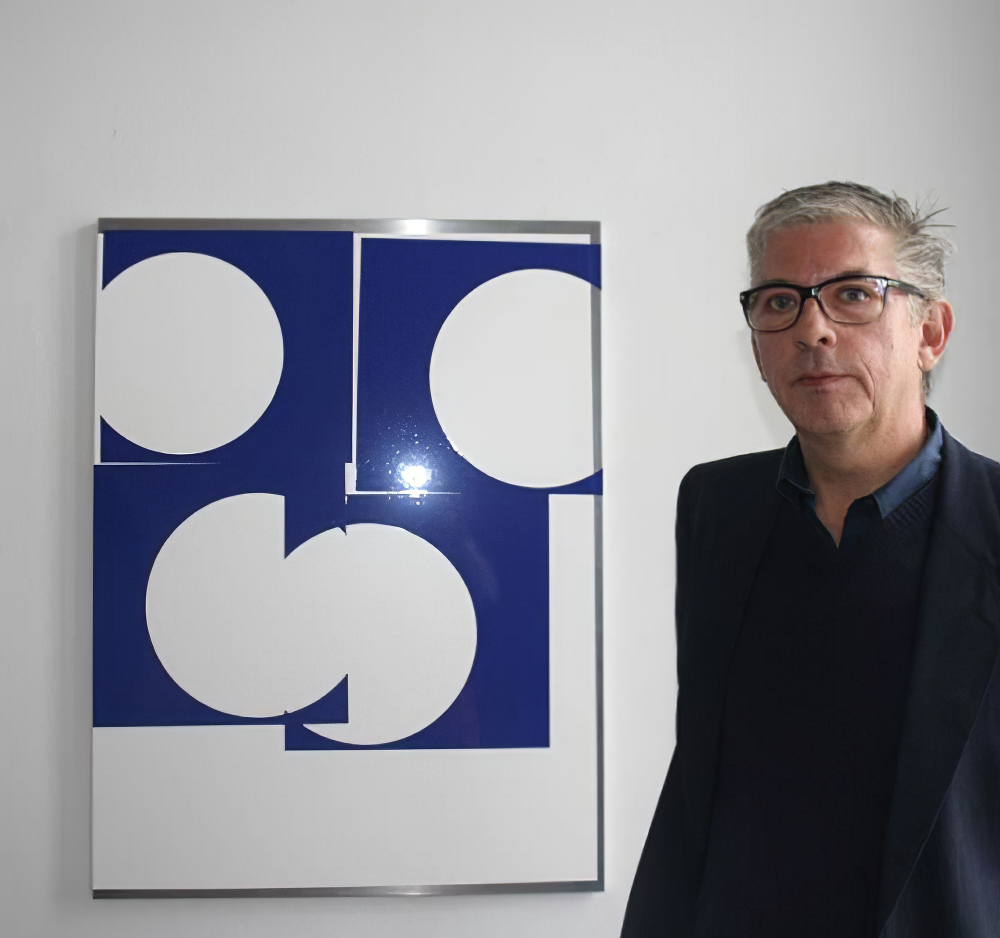
Joachim Grommek is a German artist known for his conceptual work. His geometric-abstract, illusory work perfectly reverses the theme of the original image and the copy, reflecting the history of art.
Grommek has exhibited his work widely in Germany and abroad. He has also received numerous grants and awards for his work.

Fred Thieler was a German abstract artist known for his colorful, gestural paintings. He was born in Königsberg, Germany, and studied at the Academy of Fine Arts in Königsberg before moving to Berlin in 1945.
Thieler's early work was influenced by the Expressionist and Surrealist movements, but he soon developed his own unique style characterized by bold colors and dynamic brushstrokes. He often used a palette knife to apply paint to the canvas, creating thick, impasto layers that added depth and texture to his works.
Throughout his career, Thieler participated in numerous exhibitions in Germany and internationally, including the Venice Biennale and Documenta in Kassel. He was also a member of the influential German art group "Quadriga," which included artists such as Bernard Schultze, Karl Otto Götz, and Otto Greis.
In addition to painting, Thieler also worked as a graphic designer and a teacher. He was a professor at the Academy of Fine Arts in Berlin from 1965 to 1981, where he had a significant impact on the next generation of German artists.
Thieler's work can be found in many private collections and museums, including the Museum of Modern Art in New York, the Stedelijk Museum in Amsterdam, and the Museum Ludwig in Cologne.

Karl Otto Götz was a German artist, filmmaker, draughtsman, printmaker, writer and professor of art at the Kunstakademie Düsseldorf. He was one of the oldest living and active artists older than 100 years of age and is best remembered for his explosive and complex abstract forms. His powerful, surrealist-inspired works earned him international recognition in exhibitions like documenta II in 1959. Götz never confined himself to one specific style or artistic field. He also explored generated abstract forms through television art. Götz is one of the most important members of the German Art Informel movement.

Wobbe Alkema is a Dutch artist, graphic artist, architect, designer and sculptor. He is known for his abstract and geometric works, often combining elements of constructivism and De Stijl.
Alkema was trained as an architect and then turned to art, studying at the Academy of Fine Arts in Groningen. In the 1920s he was involved with the artist collective De Ploeg, which was active in the northern Netherlands and promoted modernist art and culture.
Throughout his career, Alkema continued to explore the principles of abstraction and geometry in his work. His paintings often feature simple geometric shapes such as squares, circles and triangles arranged in complex compositions that suggest movement and depth. He was also interested in the interaction of colour, using bright, bold hues to create dynamic contrasts and harmony.
In addition to painting, Alkema created a number of sculptural works, including abstract reliefs and freestanding sculptures. He also designed furniture and other functional objects, applying his principles of abstraction and geometric form to everyday objects.
Alkema's work is held in the collections of several museums in the Netherlands, including the Groninger Museum and the Amsterdam Stedelijk Museum. He is considered an important figure in the development of abstract art in the Netherlands, and his work continues to be admired for its innovative use of form and colour.

Emil Schumacher was a German painter. He was an important representative of abstract expressionism in post-war Germany.
In 2009 the Kunstquartier Hagen was inaugurated combining the Karl Ernst Osthaus-Museum Hagen as well as the newly built Emil Schumacher Museum in one Museum complex.
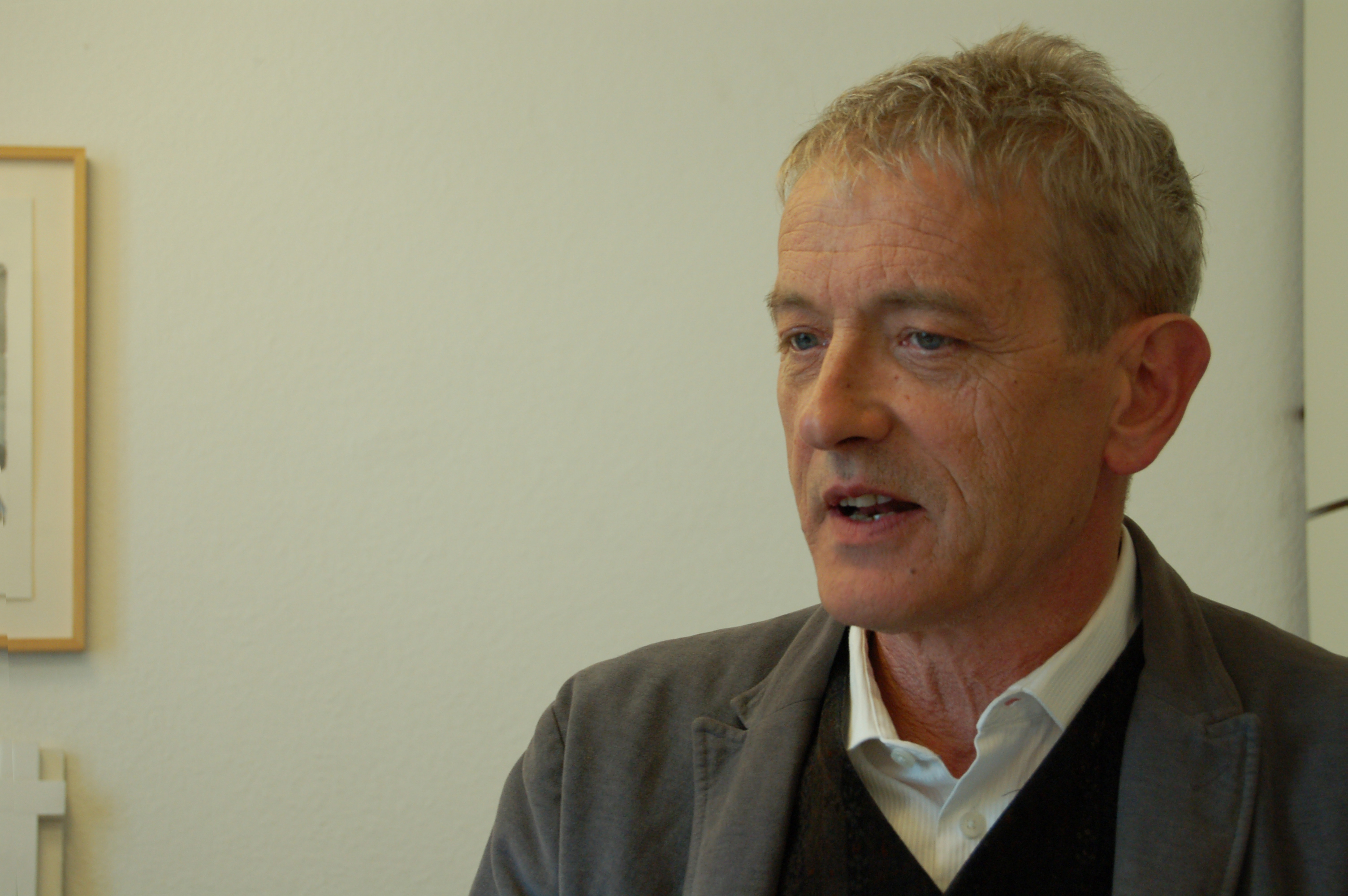
Thomas Huber is a Swiss contemporary artist renowned for his ability to weave metaphysical narratives and architectural elements into his figurative paintings. Thomas Huber has cultivated a unique artistic language that explores the relationship between space, reality, and perception through a blend of surreal scenarios and precise perspective.
Thomas Huber's work is characterized by its introspective quality, often described as "paintings about paintings," reflecting on the nature of art itself. His style, marked by clean lines and a cool, detached aesthetic, uses architecture and space to question the boundaries between illusion and reality. This approach has led to a body of work that is both ironic and timeless, inviting viewers into a fantasy world constructed from complex symbols and contradictory elements.
Throughout his career, Huber has received numerous accolades, including the prestigious Prix Meret Oppenheim in 2013 and the Art Prize of the Heitland Foundation in 2005. His works are part of significant collections in both Germany and France, and he has been featured in solo and group exhibitions worldwide.
One of Thomas Huber's recent exhibitions, "Lago Maggiore" at MASI Lugano, showcases a series of large-scale paintings and watercolors inspired by the breathtaking views of Lake Maggiore. This body of work represents a pictorial homecoming for Huber, reflecting a shift in his artistic focus towards nature and the landscapes of his youth. The exhibition not only highlights Huber's transition from architectural to natural themes but also maintains his signature exploration of the imaginary and real through meticulous composition and atmospheric depth.
For collectors and experts in art and antiques, Thomas Huber's oeuvre offers a rich exploration of the intersections between art, architecture, and the metaphysical. His ability to challenge and redefine perceptions of reality through his work makes him a significant figure in contemporary art.
To discover more about Thomas Huber's work and to stay updated on new sales and auction events related to his art, signing up for updates is highly recommended. This subscription is a valuable resource for anyone interested in the evolving landscape of contemporary art and the unique contributions of Thomas Huber.
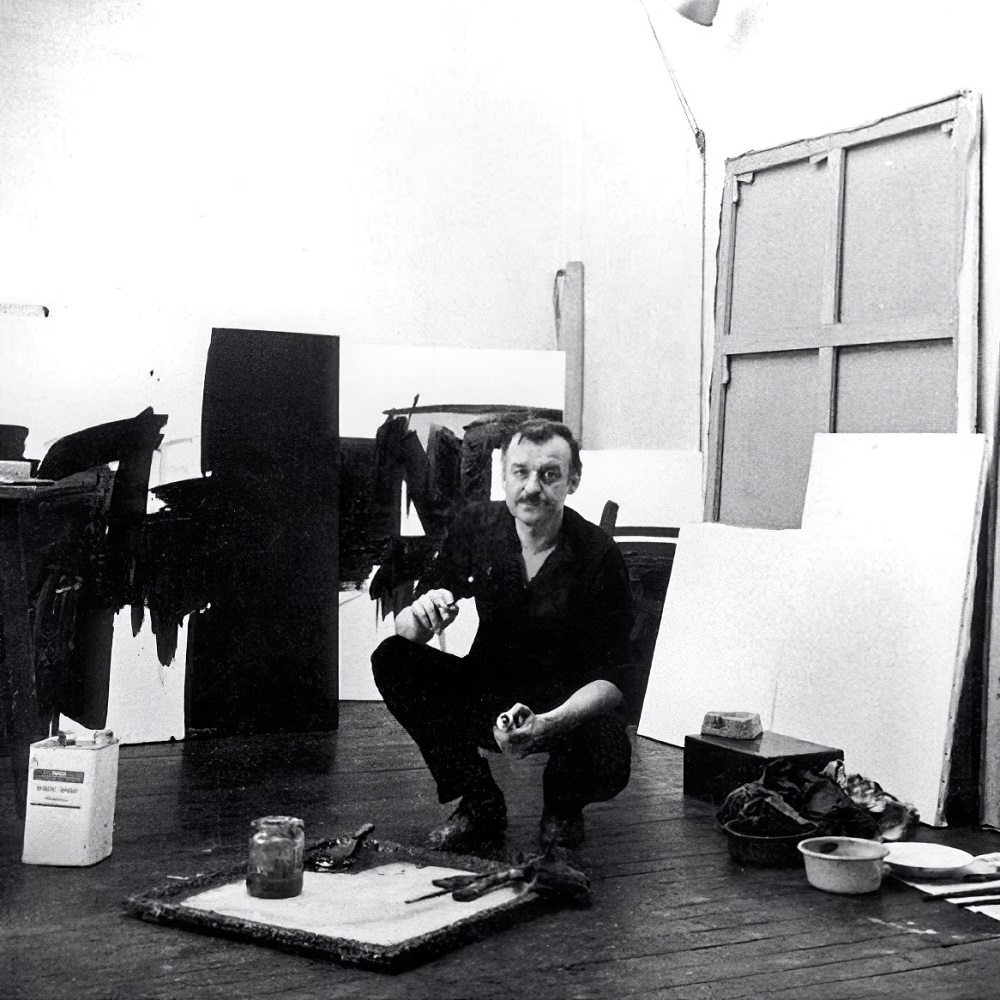
André Marfaing was a French artist known for his abstract paintings and prints.
Marfaing's work was heavily influenced by the Abstract Expressionist movement in the United States, which he discovered during a trip to New York in the early 1950s. He became interested in the potential of color and texture to convey emotion and mood, and he began to develop his own distinctive style characterized by bold, geometric forms and a limited palette of earthy tones.
Marfaing's work often featured large, block-like shapes that seemed to float or hover against a background of textured color. He worked primarily in oil on canvas, but also produced prints and drawings that reflected his interest in the relationship between line and form.
Throughout his career, Marfaing exhibited his work extensively in France and internationally. He was also awarded numerous prizes and honors.
Marfaing's work can be found in many private collections and museums, including the Museum of Modern Art in New York, the Centre Georges Pompidou in Paris, and the Guggenheim Museum in Bilbao.

André Marfaing was a French artist known for his abstract paintings and prints.
Marfaing's work was heavily influenced by the Abstract Expressionist movement in the United States, which he discovered during a trip to New York in the early 1950s. He became interested in the potential of color and texture to convey emotion and mood, and he began to develop his own distinctive style characterized by bold, geometric forms and a limited palette of earthy tones.
Marfaing's work often featured large, block-like shapes that seemed to float or hover against a background of textured color. He worked primarily in oil on canvas, but also produced prints and drawings that reflected his interest in the relationship between line and form.
Throughout his career, Marfaing exhibited his work extensively in France and internationally. He was also awarded numerous prizes and honors.
Marfaing's work can be found in many private collections and museums, including the Museum of Modern Art in New York, the Centre Georges Pompidou in Paris, and the Guggenheim Museum in Bilbao.

André Marfaing was a French artist known for his abstract paintings and prints.
Marfaing's work was heavily influenced by the Abstract Expressionist movement in the United States, which he discovered during a trip to New York in the early 1950s. He became interested in the potential of color and texture to convey emotion and mood, and he began to develop his own distinctive style characterized by bold, geometric forms and a limited palette of earthy tones.
Marfaing's work often featured large, block-like shapes that seemed to float or hover against a background of textured color. He worked primarily in oil on canvas, but also produced prints and drawings that reflected his interest in the relationship between line and form.
Throughout his career, Marfaing exhibited his work extensively in France and internationally. He was also awarded numerous prizes and honors.
Marfaing's work can be found in many private collections and museums, including the Museum of Modern Art in New York, the Centre Georges Pompidou in Paris, and the Guggenheim Museum in Bilbao.










































